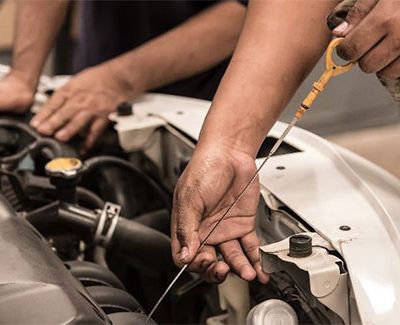How Scrap Cars Are Disposed and the Role of Engine Repair and Sales in Automotive Recycling
Table of Contents
Toggle
Every year, millions of vehicles reach the end of their road life due to age, accidents, or mechanical failures. While the image of a rusted, broken-down car might seem like the end of the line, in reality, it marks the beginning of a new cycle in the automotive world. Proper disposal of scrap cars is not just a legal obligation in many countries; it’s also a crucial part of environmental sustainability and economic reuse. In this blog, we’ll explore the complete lifecycle of scrap cars, the processes behind automotive recycling, and how engine repair and engine sales form a vital part of this ecosystem
Understanding Car End-of-Life (ELV)
What is an ELV?
An End-of-Life Vehicle (ELV) is a car that is no longer roadworthy or economically viable to repair. According to the European Union, ELVs are a significant source of waste, and specific regulations ensure they are disposed of responsibly
Causes of Vehicle Retirement:
- Severe accidents
- Engine or transmission failure
- High mileage
- Obsolescence or outdated safety standards
- Owner upgrade decisions
The Vehicle Disposal Process
Deregistration and Legal Compliance
Before a car can be scrapped, it must be officially deregistered. In most countries, this involves notifying the transport authority and obtaining a Certificate of Destruction (CoD)
Initial Inspection
Scrap yards or authorized treatment facilities (ATFs) conduct an initial inspection to assess the vehicle’s condition and identify any salvageable parts, especially the engine
De-pollution
Hazardous materials such as engine oil, coolant, brake fluid, fuel, and battery acids are safely removed. These materials must be handled carefully to prevent soil and water contamination
Dismantling
Once de-polluted, the vehicle is dismantled. Reusable components like doors, seats, tires, and most importantly, the engine and transmission system, are extracted for resale or reconditioning
Crushing and Recycling
The vehicle shell, now stripped of valuable parts, is crushed and sent to a metal recycling facility. The shredded metal is sorted and melted for reuse in manufacturing
The Value of Used Engines
Why Engines Are Salvaged
Engines are one of the most valuable components of any vehicle. If maintained well or with potential for repair, used engines can be refurbished and resold, offering a cost-effective alternative to new engine units.
Market for Used Engines
There is a growing global market for used and reconditioned engines. Buyers include:
- Independent garages
- Vehicle owners seeking cost-effective repairs
- Engine exporters
- Vehicle modification and tuning enthusiasts
Environmental Benefits
Refurbishing engines reduces the need for new manufacturing, thereby conserving resources and reducing carbon emissions. It also prevents functional components from ending up in landfills.
Engine Repair: Giving Life Back to Old Machines
Assessment and Diagnosis
Before repairing an engine, a thorough assessment is done to evaluate its condition. Diagnostic tools help identify issues such as low compression, damaged cylinder heads, or worn-out bearings
Common Engine Repairs:
- Replacing gaskets and seals
- Reboring cylinders and installing oversized pistons
- Reconditioning crankshafts
- Cleaning and testing fuel injection systems
Cost vs. Benefit
Repairing an engine is often more cost-effective than replacing the entire car. For commercial fleet owners or car enthusiasts, engine repair is a practical and economical option
Selling Reconditioned Engines
The Supply Chain
Once an engine is reconditioned, it can re-enter the automotive market through various channels:
- Online platforms (e.g., eBay, AliExpress, YeahEngine.com)
- Engine specialists and distributors
- Export markets where demand for reliable used engines is high
Quality Assurance
Buyers often seek engines with documented repair history, warranty options, and testing certifications to ensure reliability
Marketing and Customer Trust
Transparency, competitive pricing, and after-sale support are critical in building trust with customers. Educational blogs and video tutorials can also enhance buyer confidence
Your Role in the Circular Automotive Economy
For Vehicle Owners
If your car is reaching the end of its life, consider donating, recycling, or selling it to an authorized treatment facility. Salvaging valuable parts like the engine helps reduce waste
For Mechanics and Workshops
Partnering with engine suppliers or becoming a distributor for reconditioned engines can open up new revenue streams
For Engine Sellers
Understanding the lifecycle of a vehicle and the role of engines in the reuse cycle helps align your business with sustainability goals and market demand
The journey of a scrap car does not end at the junkyard. With proper treatment, recycling, and repair, vehicles can continue to contribute to the economy and the environment. Engines, in particular, serve as the beating heart of this process—whether being reused, repaired, or resold. By participating in this cycle, you’re not only saving money or earning profit—you’re also driving forward a more sustainable and responsible automotive future
Stay tuned to our blog for more insights into engine repair, automotive recycling, and best practices in sourcing quality used engines




